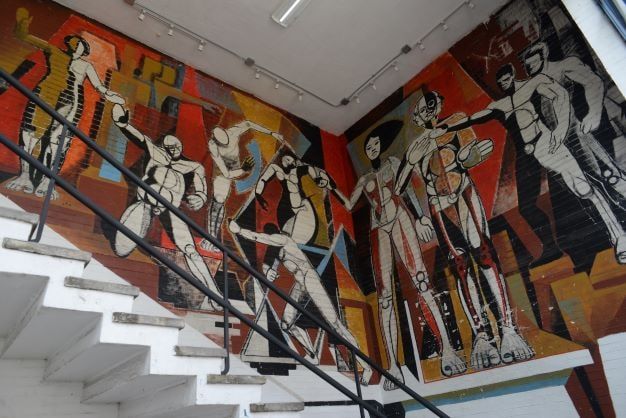The Tepito Arte Acá mural in the Faculty of Architecture, University City
The untitled piece is known colloquially as the Tepito Arte Acá mural, thanks to the fact that it was a gift from the Tepito Arte Acá collective to Workshop 5, as it was then known.





